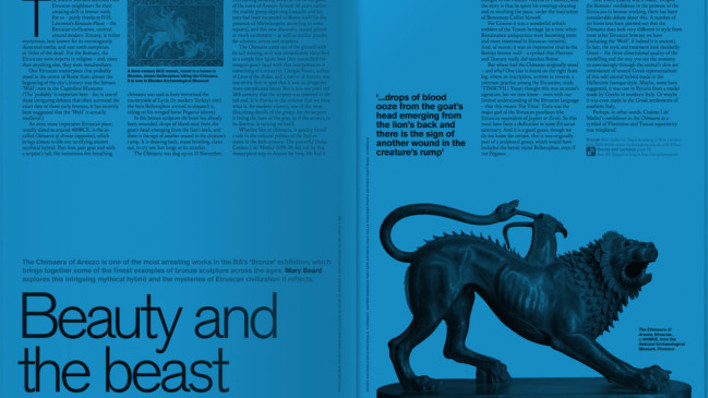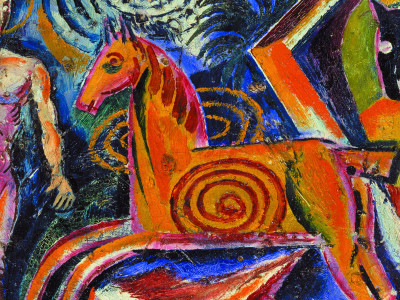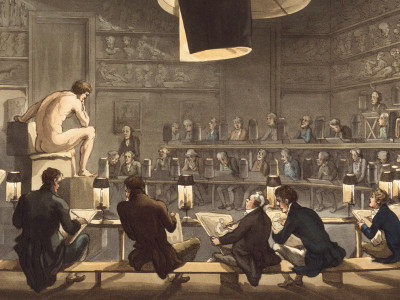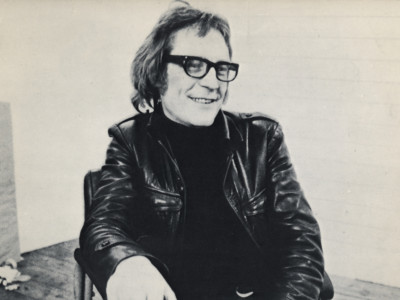
Filmmaker Horace Ové's powerful depictions of 1970s Black British life
By Hurvin Anderson
Published on 7 December 2021
Horace Ové's work has influenced John Akomfrah RA, Isaac Julien RA and countless others. Ahead of Tate Modern's group show, 'Life Between Islands: Caribbean-British Art 1950s-Now', artist Hurvin Anderson looks back at Ové's films and the stories they tell.
From the Winter 2021 issue of RA Magazine, issued quarterly to Friends of the RA.
Hurvin Anderson is a painter. His solo show Reverb is at Thomas Dane Gallery, London, until 4 Dec.
When I was a teenager beginning to make work, there was an abundance of painterly inspiration in the European tradition but not so much that answered the thematic question: ‘What does this have to do with you?’ Horace Ové’s photographs and films seemed to offer some answers.
Ové is featured in Tate Britain’s new show Life Between Islands, a survey of Caribbean-British art, with over 40 artists taking part, myself included. His film Pressure is on show, which came out in 1976 and is widely described as the first Black British feature film, telling the story of a family dealing with life as immigrants in 1970s Britain. When I was watching it as an adolescent in Birmingham, where I was born after my parents relocated from Jamaica with my older siblings, it seemed to represent so many of my own difficulties with identity and belonging, and to reflect the life I was living and a world-view I knew.
The film centres on the character of Tony (pictured below), born in Britain to a family from the Caribbean, as he, his family and his community struggle to survive and make a life for themselves in a challenging and unwelcoming environment.

Tony is under pressure to get a job to earn his way and please his conformist parents, but he is also having difficulties with his older brother Colin, a member of the Black Power Movement who taunts Tony’s efforts to find work and fit in in the face of racial prejudice. Tony’s mother sums up the issue succinctly when she says
of Tony, “He’s not like us. He’s born here”. This notion of otherness and of not quite fitting
in was and is felt by many, but I don’t think I’d seen it so clearly depicted until I watched Ové’s Pressure.
The tension between the brothers is clearly felt and reveals Tony’s inner conflict. There
is a scene early on when the two young men sit at the kitchen table that always makes me think of Van Gogh’s The Potato Eaters. I think it’s in the composition but also the struggle, the disillusionment, the frustration and anger. Ové used local people alongside actors and this seems to blur the line between drama
and documentary. Everything about the film feels faithful to life in a Caribbean household like mine, from the soundtrack and details such as the Bruce Lee posters on the wall, and mementos from back home in the living room,
to the plate of rice and peas. It’s nuanced and creates a kind of magic out of the ordinary.
While the film’s storyline covers big
social and political topics like immigration, racism, police brutality and the Black Power Movement, it was its depiction of unrest within the domestic setting that most compelled me. It felt like a relief to see a portrayal of family life like this.
Everything about the film feels faithful to life in a Caribbean household like mine, from the soundtrack and details such as the Bruce Lee posters on the wall, and mementos from back home in the living room, to the plate of rice and peas.
Hervin Anderson

With Pressure and his later films A Hole in Babylon (1979) and Playing Away (1986), Ové paved the way for the future filmmakers of
my generation such as Isaac Julien RA and John Akomfrah RA, and in doing so made a lot of things possible. I think, crucially for me, the film made me think about how to tell a story, and how to convey an experience that is at the same time both personal and universal.
Both Hurvin Anderson and Horace Ové are included in Life Between Islands: Caribbean-British Art 1950s –Now Tate Britain, London, 1 Dec–3 Apr 2022

Enjoyed this article?
As well as free entry to all of our exhibitions, Friends of the RA enjoy one of Britain’s most respected art magazines, delivered directly to your door. Why not join the club?
Related articles

Visions from Ukraine
19 June 2024

10 RA Schools stories through the centuries
16 May 2024

In memoriam: Mick Moon RA
1 May 2024